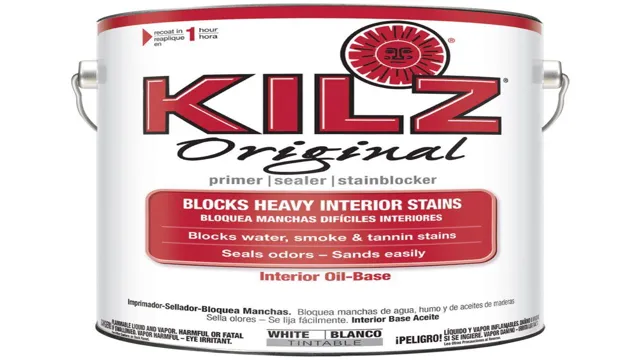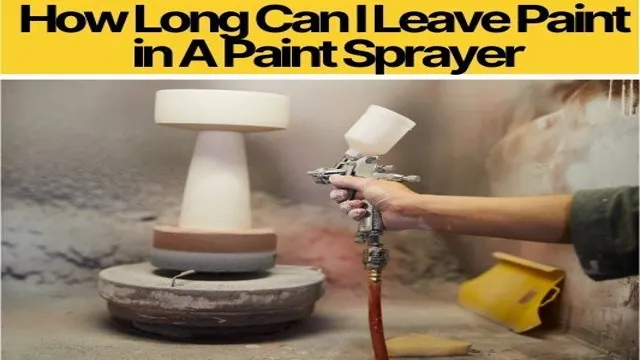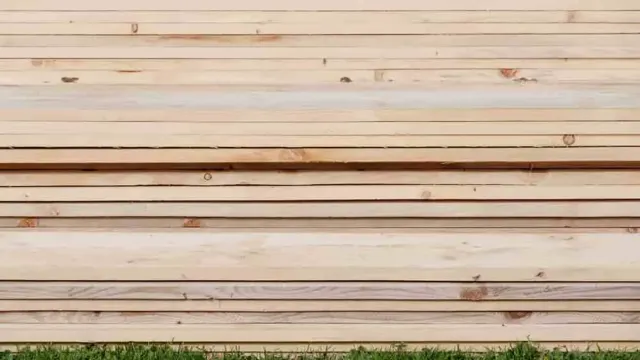
Looking to give your walls a fresh new look? Painting is an excellent way to transform any room, but before you brush on the color, it’s crucial to prime the surface. Priming not only helps the paint adhere better, but it also covers up any imperfections and stains. Kilz is a popular brand of primer, known for its high-quality formula that seals in stains and odors.
However, when it comes to thin Kilz primer, it can be a bit tricky to get the perfect consistency. Fear not, though – in this post, we’ll share some tips on how to get your thin Kilz primer just right.
What is Kilz Primer?
Kilz primer is a type of paint primer that is designed to cover up stains and ensure that the paint adheres properly to the surface it is being applied to. It is a popular choice for use on walls, ceilings, and other surfaces that have been damaged or are in need of a fresh coat of paint. Kilz primer is available in a range of formulations to suit different surfaces and requirements.
However, whether you can thin Kilz primer or not depends on the type of Kilz primer you have and the instructions provided by the manufacturer. Generally, Kilz primer comes pre-mixed and ready to use without any thinning required. However, some formulations may allow for thinning with water or another compatible solvent.
It is important to read the label and follow the manufacturer’s instructions carefully when using Kilz primer to ensure optimal results.
Kilz Primer Overview
Kilz Primer is a type of paint primer that is designed to create a smooth, even surface for painting. It is a brand that has been around for over 40 years and has become a household name in the world of painting. Kilz primer provides superior coverage for all types of surfaces, from drywall to wood to masonry.
One of the main benefits of using Kilz primer is that it helps to hide and seal stains, such as water damage and smoke damage. It also helps to eliminate odors, making it a great choice for people with pets or who are sensitive to smells. Kilz primer comes in a variety of formulas, including oil-based and water-based options, and can be tinted to match the final paint color.
Whether you’re a professional painter or a DIY enthusiast, Kilz primer is a great choice for creating a flawless finish on your next painting project!

Why Thin Kilz Primer?
If you’re working on a painting or renovation project, you may have heard of Kilz primer. This type of primer is a popular choice for its ability to cover up stains and provide a smooth base for paint to adhere to. But did you know there are different types of Kilz primers? One type that many people may not be familiar with is Thin Kilz Primer.
As the name suggests, this primer is thinner than traditional Kilz primers, making it easier to apply and work with. It’s also designed to dry quickly, so you can complete your project faster. Thin Kilz Primer is a great choice for those who want the benefits of Kilz primer but with a lighter consistency.
Plus, like other Kilz primers, it provides excellent adhesion and stain blocking properties, ensuring a high-quality finish for your project. So if you’re looking for a reliable primer that’s easier to work with, consider giving Thin Kilz Primer a try.
How to Thin Kilz Primer
If you’re wondering whether you can thin out Kilz primer, the answer is yes, you can. However, Kilz recommends against thinning its oil-based primer since this may affect its ability to provide excellent coverage and adhesion. In case you still want to thin it out, you can use up to 10% mineral spirits or turpentine to thin Kilz primer, but you must stir it well and add gradually.
Keep in mind that thinning oil-based primer will impact its dry time, as well as the durability and holdout properties of the coating. On the other hand, you can use water to thin out Kilz latex primer. Do not use more than 10% water as this will negatively impact the coverage, hiding and leveling properties of the primer.
Before thinning out any primer, including Kilz, read the manufacturer’s instruction manual and consider the surface you’re painting to avoid any undesirable results.
Materials Needed
Kilz primer If you want a perfectly smooth and even paint application, you need to start with a properly primed surface. Kilz primer is a popular choice for homeowners and professionals, as it helps cover up stains, odors, and imperfections on walls, ceilings, and other surfaces. However, if you have a thick or old Kilz primer, you may need to thin it out before use.
To thin Kilz primer, you will need some materials such as water, stirrer or paint stirrer, measuring container, and a clean bucket. The process of thinning Kilz primer involves adding a small amount of water to the primer, stirring it thoroughly, and checking for consistency. It’s essential to add water in small increments, as adding too much water can affect the effectiveness of the primer.
Once you achieve the desired consistency, your Kilz primer is now ready to use on your surface. With these steps, you can confidently prepare your Kilz primer for your painting project and ensure that it lasts even after years of use.
Step-by-Step Instructions
Thinning Kilz primer is a crucial step that ensures a smooth and professional finish to your painting project. To thin Kilz primer, you will need a few materials, such as water, a container, and a stirring stick. Here is a step-by-step guide to thinning Kilz primer effectively: Step 1: Prepare the materials needed, including Kilz primer, water, a container, and a stirring stick.
Step 2: Check the consistency of the primer. If it’s too thick, pour the required amount into the container. Step 3: Slowly add water to the Kilz primer.
Begin by using 1/2 cup of water for every gallon of primer, and stir the mixture using a stirring stick. Step 4: Mix the water and primer solution thoroughly. Continue adding water if the primer is still too thick.
Only add water in small increments to avoid over-thinning the primer. Step 5: Test the consistency of the primer. Dip your brush or roller into the primer and see if it drips or flows easily on the surface.
If it spreads smoothly, then the primer is ready for use. Remember to stir the primer often as it may settle at the bottom of the container. Before applying the primer, ensure that the surface is properly cleaned and dried.
Thinning Kilz primer may require some practice, but once you get the hang of it, it will be a breeze. With these simple steps, you’ll be able to achieve a smooth and professional finish to your painting project.
Testing the Consistency
If you’re looking to use Kilz primer on your walls but find that it is too thick to apply, don’t worry! There’s a simple solution to this problem. The best way to thin out Kilz primer is by adding water to it. However, it is important to ensure that you do not add too much water as it can affect the consistency of the primer.
The suggested amount of water to add is about 10% of the total amount of primer you’ll be using. To be more specific, if you have a gallon of Kilz primer, you can add about 12 ounces of water. It is important to stir the primer and water mixture properly to ensure proper consistency.
Once the primer has been thinned out, you can proceed with your painting project as normal. By thinning out the Kilz primer, you’ll be able to achieve better coverage and a more professional-looking finish. With this simple and easy solution, you’ll be able to achieve excellent results on all your painting projects.
Tips for Thinning Kilz Primer
If you’re wondering whether you can thin out your Kilz primer, the short answer is yes, you can. However, it’s important to keep in mind that thinning out the primer can impact its effectiveness and performance. Before thinning out your primer, it’s essential to check the manufacturer’s instructions and follow their recommended guidelines.
Different types of Kilz primers may require different dilution ratios, so be sure to use the same type of solvent or thinner as recommended. Most often, the recommended solvent for thinning Kilz primer is mineral spirits or xylene. It’s important to remember that too much solvent can affect the adhesion and sealing ability of the primer, so it’s better to add the solvent in small amounts and to stir it well to ensure proper mixing.
With these tips, you can effectively thin your Kilz primer to achieve your desired consistency while still ensuring excellent adhesion and sealing properties.
Avoiding Common Mistakes
When it comes to priming your walls, Kilz Primer is a popular choice that can help provide a solid base for painting. However, sometimes it may need to be thinned to achieve the desired consistency. Here are a few tips on how to thin Kilz Primer without making some common mistakes.
Firstly, you should always follow the directions on the label. These directions will specify the correct solvent to use, as well as the recommended ratio of solvent to primer. Secondly, always use a clean and dry container to mix the primer and solvent.
This will prevent any contaminants from affecting the consistency of the primer. Additionally, be sure to mix the primer and solvent thoroughly to ensure a consistent finish. Finally, never over-dilute the primer.
If you thin it too much, it may lose its effectiveness and fail to provide adequate coverage. By following these simple tips, you can successfully thin Kilz Primer for your painting projects.
Choosing the Right Thinning Agent
When it comes to painting projects, choosing the right thinning agent can make all the difference. If you’re planning to use Kilz primer for your project, there are certain considerations to keep in mind. First and foremost, it’s essential to choose a thinning agent that’s compatible with Kilz primer.
Additionally, the amount of thinning agent you’ll need will depend on a variety of factors, including the type of paint you’re using, the conditions in which you’ll be painting, and the desired finish of your project. As a general rule of thumb, it’s better to start with a small amount of thinning agent and add more as needed, rather than adding too much right off the bat. This will help you achieve the perfect consistency for your Kilz primer and ensure a flawless finish on your project.
So, whether you’re a seasoned pro or a DIY newbie, taking the time to choose the right thinning agent can help you achieve the results you’re looking for.
Conclusion
Ultimately, when it comes to the question of whether or not you can thin Kilz primer, the answer is a bit like trying to thin out a brick wall – technically possible, but not necessarily advisable. While some may suggest adding a bit of water or mineral spirits to thin out the primer, doing so can compromise its effectiveness and even lead to problems like uneven coverage or flaking. So, while you might be able to thin Kilz primer, it’s generally best to leave it as is and apply it evenly and generously for the best results.
After all, when it comes to painting, you don’t want to cut corners – you want to make sure your job is as smooth and flawless as possible, and that starts with using the right materials in the right way.”
FAQs
What is Kilz primer used for?
Kilz primer is used to prime surfaces before painting, providing better adhesion and coverage for the topcoat.
Is Kilz primer good for covering stains?
Yes, Kilz primer is great for covering various stains such as smoke, water, and mildew stains.
Can Kilz primer be used on exterior surfaces?
Yes, Kilz primer can be used on exterior surfaces including wood, metal, brick, concrete, and stucco.
What is the difference between Kilz primer and regular paint primer?
Kilz primer is specifically formulated to provide superior coverage and adhesion, making it a better option for tough surfaces and stains compared to regular paint primer.
How long does Kilz primer take to dry?
Kilz primer dries to the touch in 30 minutes to an hour and can be recoated or topcoated in 1 hour.
Can Kilz primer be tinted to a specific color?
Yes, Kilz primer can be tinted to a specific color at the paint store.
Is Kilz primer safe to use indoors?
Yes, Kilz primer is safe to use indoors and has low VOC (volatile organic compound) emissions.








